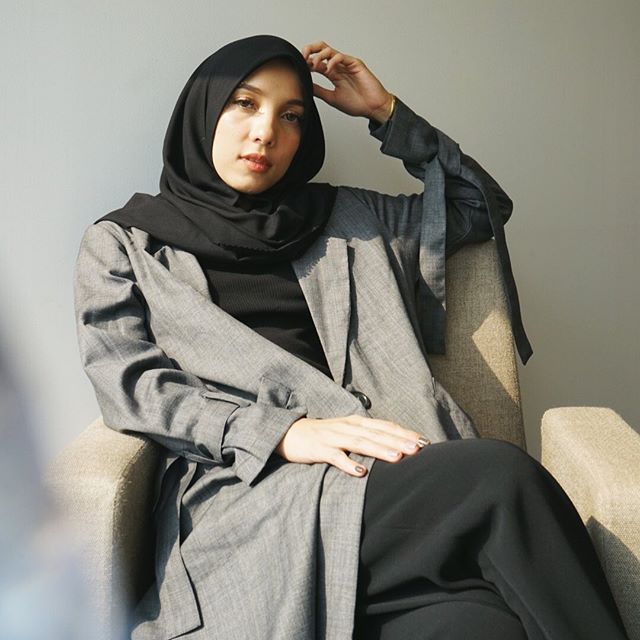
Over the past few years, the Fashion industry, specifically in Jakarta, has become a hot spot for the latest trends in Islamic fashion. Indonesia is home to the largest population of Muslims in the World. I will be looking into how Islam, women, clothing, and modernity all play off one another. More specifically, how the ever-growing fashion industry in Indonesia affects Muslim women’s identities and modernity. There has been a rise in both consumerism and religion in Indonesia, two seemingly opposite occurrences. However, the rise of these devices can shed some light on the experiences, and the self-expression of young Muslim women in the current fashion climate.
For a little bit of context, I will share some of the history of Indonesia and the countries’ relationship with Islam1. Indonesia currently has the largest population of Muslims in the world (Around 250 million). Due to Islam being “new” Indonesia is very much trying to find it’s identity within the global Muslim community. Indonesian women didn’t traditionally wear head coverings, the increase in veiling can not be related to a “return to tradition (Bucar p. 6)” and so, what does that mean for modernity?

Modernity concerning the style in Indonesia has to do with the chose to cover and their growing Muslim identity. This symbolizes a stand against the collusion of religion and politics and serves as an expression of cultural Islam independent of state apparatus or policy (Bucar p. 104). Pious Muslim fashion is considered a modern and trendy style. Popular trends include pastel colors, florals patterns, paired with a dewy natural makeup look. The silhouettes are dynamic and range from beautiful flowing dresses to a shirt and cigarette-pants combo that emphasizes one’s figure. Similar to many places, it seems that there is a fair amount of pressure to dress a certain way. There’s a popular genre of helpful tips for Hijabi women that explain the dos and don’ts of fashion. For example, wearing jilbab that is flattering for your face shape, not correctly wrapping your headscarf, and using too many or too few pins/accessories are all common mistakes. Another prevalent topic is bad jilbab. There’s a large market for teaching women how to dress in a proper Pious way. This could be due to the newness of pious clothing. Many women didn’t have a mother who wore jilbab that could teach them. And a large number of women don’t choose to cover until their college age. This means there’s a lot of women who require helpful resources to learn to dress appropriately. Furthermore, modest clothing has also had a major boom in the past few years which makes it more accessible than ever before. With a constantly growing market, This idea of bad jilbab is used almost as a grading system for how well you present your piety in public. If someone’s jilbab is unfashionable it can be seen as ingenuine.
This ingeniousness can also be connected to the hot button issue of the balance of consumerism and piety. Devoutness and consumerism seem like two opposite phenomenon but, there a significant relationship between the two. In Indonesia, it’s the case of vanity vs virtue, where women don’t want to become ‘corrupt’ by focusing too much on consuming rather than being virtuous. On the other hand, there’s a certain level that women have to meet to have good jilbab. This is a very gendered issue, but it also shows us that class can play a role in looking acceptable. In terms of modernity, the use of consumerism to showcase piety or status isn’t necessarily a new practice, but it’s more accessible than ever before and shows how the significance of fashion has evolved.

However, the core of this research is how women express themselves of Islam though their clothing, what that has to do with modernity, and why that’s important. It’s no question that fashion is often a big part of most women’s lives. Like anywhere, Indonesia has social ‘rules’ and guidelines when it comes to dressing appropriately. As touched on before, Pious Fashion is a new emergence that is being led by young women who want to show their piety fashionably. Specifically in Indonesia, the choice to cover is empowering to these young people because it allows them to showcase an important part of their identity. Modest apparel in Indonesia is extremely diverse. One of the biggest trends is all the hundreds of ways to pin your headscarf. While it can seem overwhelming to women new to covering, it’s enjoyable to pick and choose different styles of jilbab that are the most flattering for your face shape, or to experiment with new trends. In some ways, current Indonesian fashion is meant to show the difference between young women and their parents who dressed in what are now considered bad jilbab, almost as a small act of rebellion. These young women want to look good while still showcasing their piety. Many feel that wearing jilbab helps them be a better person, many decided to start veiling to become more pious and connected to their Muslim identity. While I was researching this topic, the evolution of pious fashion in Indonesia reminded me of the recent re-emergence of 90s fashion, where young people took the old and made it new again. Ultimately, Indonesian Muslim Women’s relationship with fashion and modernity is an interesting look a taking something like pious fashion, that is believed to be old or ancient, and showing us that it’s a modern form of expression and devotion.
Bibliography
Ahmed, Nazeer. “Islam in Indonesia.” History of Islam, January 8, 2018. https://historyofislam.com/contents/the-post-mongol-period/islam-in-indonesia/.
Alaydrus, Nabila [@nabilazirus] (2019, September 16), untitled, . https://www.instagram.com/p/B2f3qdVnb8M/
Bucar, Elizabeth M. Pious Fashion: How Muslim Women Dress. Cambridge, MA: Harvard University Press, 2017
Bucar, Elizabeth M. The Islamic Veil: a Beginners Guide. Oxford, England: Oneworld, 2012.
Djamal, Farah Fachriani [@farahjamal] (2019, August 9), untitled https://www.instagram.com/p/B08gSAYniJL/
Jones, Carla. “Fashion and Faith in Urban Indonesia.” Fashion Theory 11, no. 2-3 (2007): 211–31. https://doi.org/10.2752/136270407×202763.
